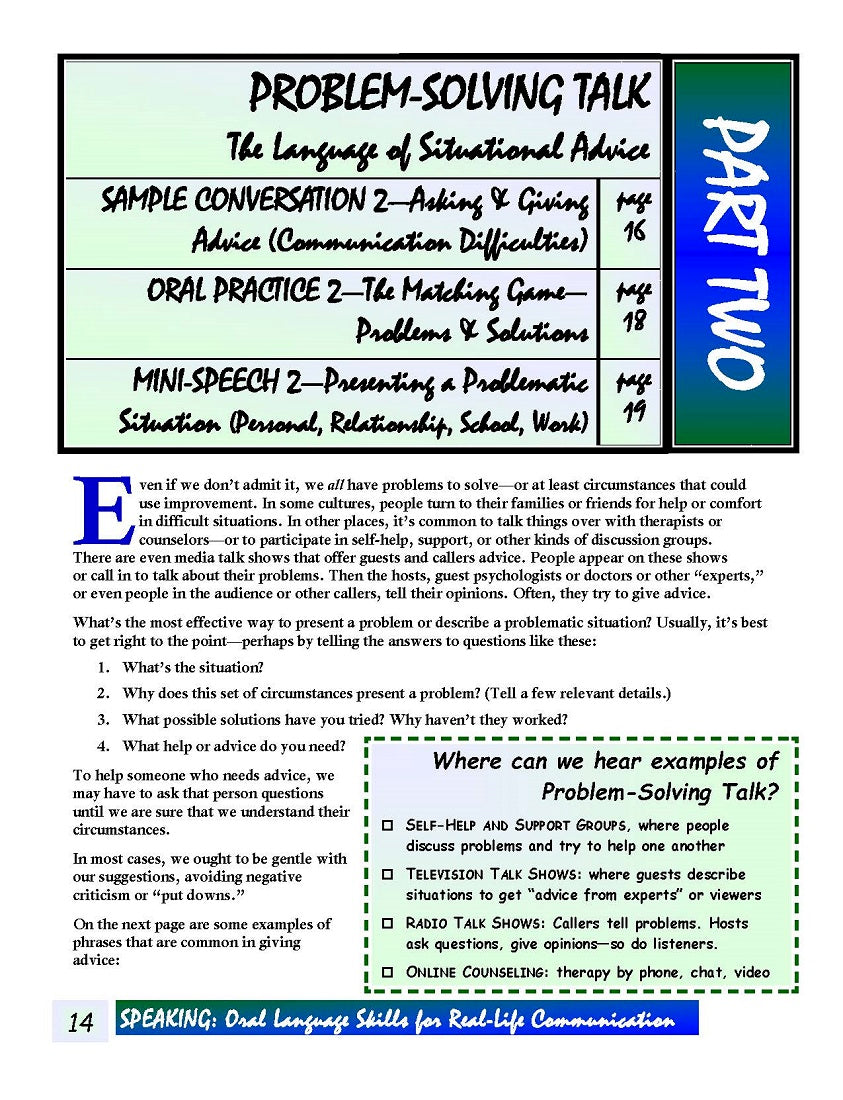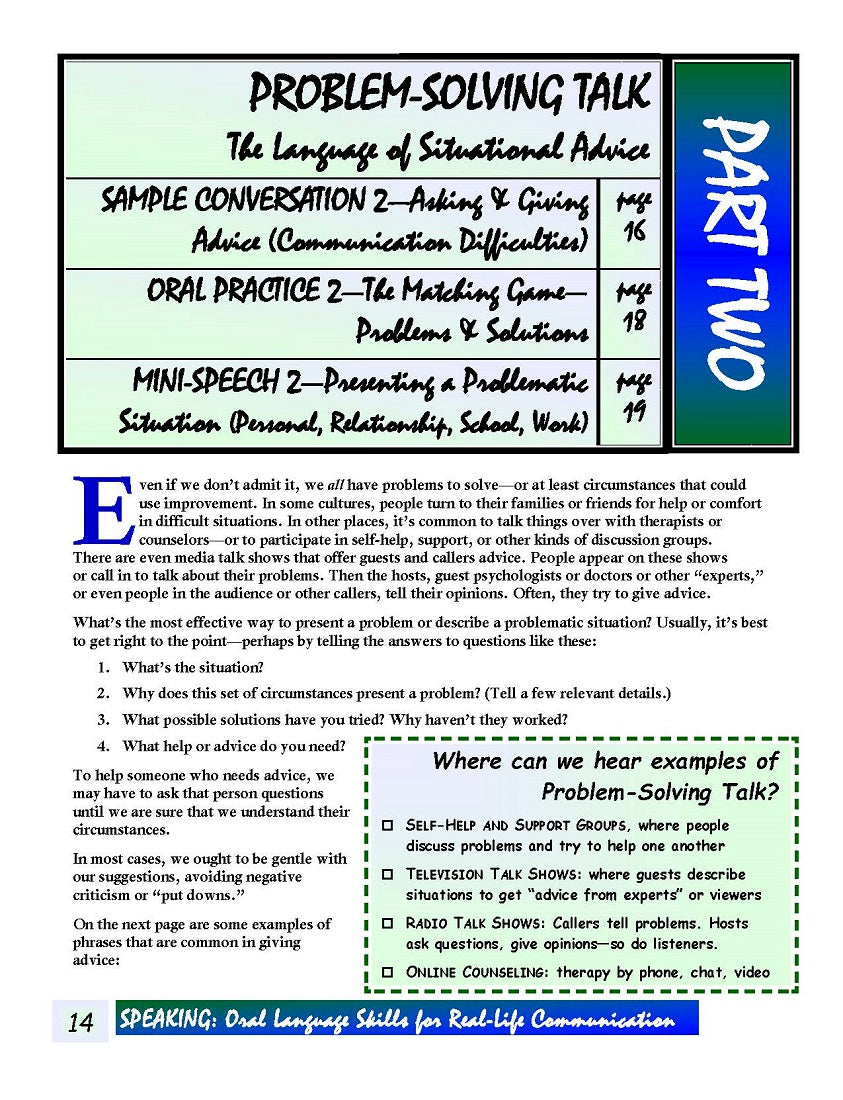Work/Life English
E-10.05 Use “Language of Situational Advice” to Request Help, Present & Resolve Problems
E-10.05 Use “Language of Situational Advice” to Request Help, Present & Resolve Problems
Part Two of Speaking: Oral Language Skills for Real-Life Communication = Problem-Solving Talk, pages 14-19
6 Pages
Who It’s For: (Teachers & Helpers of) Progressing Language Learners Who May Attempt to Improve (Their Own and/or Others’) Circumstances
Why It’s Useful: “What’s the most effective way to present a problem? Usually, it’s best to get right to the point—perhaps by answering questions like these: What’s the situation? Why does this set of circumstances present a problem? What possible solutions have you tried? Why haven’t they worked? What help or advice do you need?”
That’s how Part Two of the Speaking Text begins, and it sticks to this plan throughout—in its Sample Conversation, Oral Practice, and Mini-Speech instructions.
What You’ll Do:
[1] Start out with general description of what “Problem-Solving Talk” is—and where to hear examples of it in the real world / media. Get useful Vocabulary—conversational phrasing for advice that ranges from “gentle & kind” to “harsh & insulting.” Then follow this advice: “Present the Problem Clearly, Honestly, & Briefly.” “Use Active Listening Skills.” “Converse for Constructive, Positive Purpose.”
[2] Listen to the Audio and/or read aloud Sample Conversation 2: Asking & Giving Advice about Communication Difficulties. Answer Comprehension Questions.
[3] In Oral Practice 2, match Solution with (self-created or collected) Problem Cards. With a partner, present your problematic situation to the whole group. Lead a discussion about possible solutions before telling what the “official” advice is. Listen to and participate in others’ presentations. Outside of class, look / listen for real or media problem-solving situations to learn from and/or participate in.
[4] Mini-Speech 2 is for Presenting a Problematic Situation. Follow its preparation, brainstorming, and problem-resolution steps. As far as possible beyond the classroom, make use of the well-intentioned, considered advice you get. Maintain interest in how others fare when they take your suggestions.
Couldn't load pickup availability


